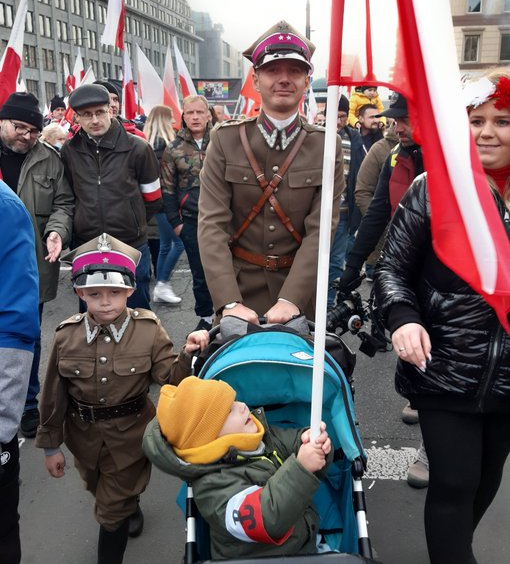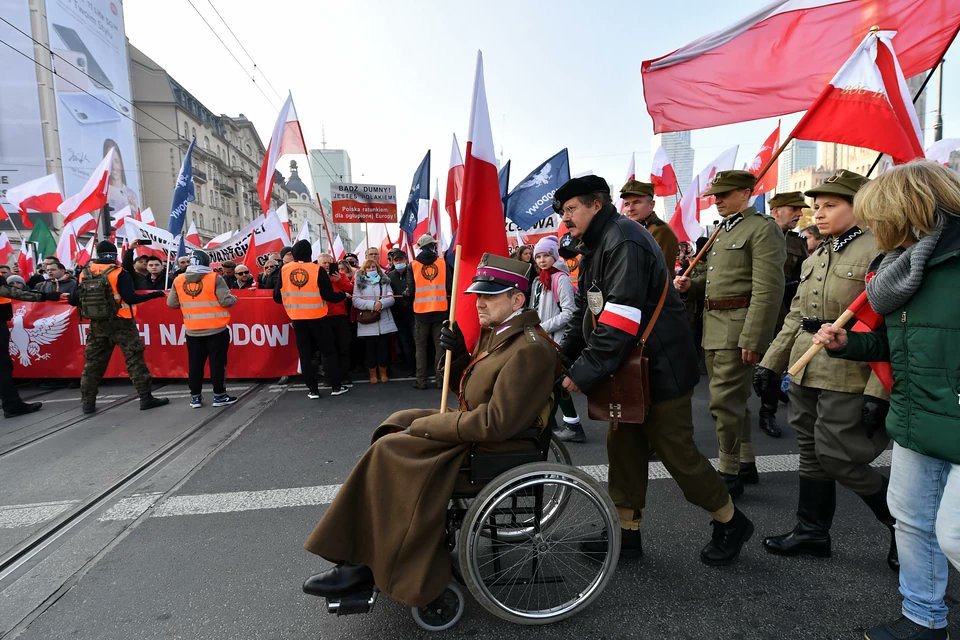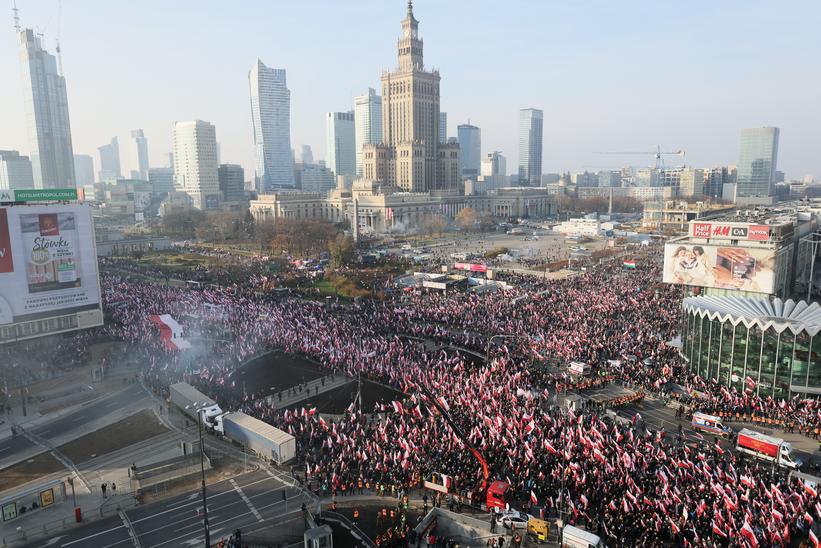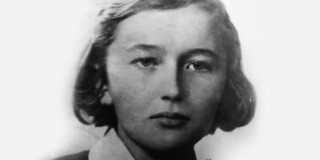The impressive patriotic demonstration of the Poles for their Independence Day
Every November 11, Poland celebrates the anniversary of regaining its independence in 1918, after 123 years of partitioning the country.
On the occasion of Independence Day, patriotic marches are held in many Polish cities. The main convocation, the Marsz Niepodległości (Independence March) is the one held in Warsaw, the capital of Poland, and yesterday gathered more than 150,000 people in a great tide of white and red flags, at a time when this Central European country is once again attacked on two fronts: on the one, Brussels, with its attempt to impose the leftist ideological agenda on the Polish people, violating their national sovereignty, and on the other, Belarus (with the support of Putin's Russia), with its migratory attack on the eastern border of Poland. You can see here a series of photos of this demonstration.

Crowds crossing the Poniatowski Bridge, over the Vistula River, in Warsaw (photo: @Kuba4pl).

The Warsaw march was a sea of red and white flags (Photo: PAP / Leszek Szymański).

One of the characteristics of this march is its family character. Here a father with his son in his arms (photo: PAP / Wojciech Olkuśnik).

A family on the Warsaw march. The father and eldest son wear uniforms like those used by the Polish cavalry in 1939 (photo: @adela_rock).

The march annually brings together young and old, united by the same love for Poland. The old man in the photo is wearing a Kotwica bracelet, the emblem of Armia Krajowa, the main organization of the Polish resistance against the Third Reich (photo: PAP / Wojciech Olkuśnik).

Another image of the river of Polish flags that made up the Warsaw march (photo: @ArekAreckiipp).

A large Hungarian flag on the Warsaw march. Poles and Hungarians have been united by a close friendship for centuries (photo: Tysol.pl).

Two black men in the Warsaw march. One of them, speaking in Polish, told a journalist: “Poland is the best country in Europe”, according to DoRzeczy (photo: @cezarykrysztopa).

A group of reenactors in uniforms of the Polish resistance against communism and the era of the World War II, at the Warsaw march (photo: @Kuba4pl).

Members of the Spanish party Vox participated in this demonstration with a Spanish flag with the Cross of Burgundy (an emblem also used by the Polish infantry) and a banner that read "Spain and Poland will defend their borders" (photo: Visegrad24).

Bawer Aondo-Akaa, a Krakow-born Pole of Nigerian origin, a Catholic and a famous pro-life activist, never misses the Warsaw march, despite his disability that forces him to go in a wheelchair. He is very popular in Poland and always receives many expressions of affection from other protesters (photo: @krisb2000).

The Catholic faith has been one of the backbones of the Polish Nation for centuries. It kept the Poles united during the partition, during the nazi occupation and during the communist dictatorship, and that is why there is never a lack of religious displays in this march (photo: @Sachinettiyil).

A banner with the portraits of two great Poles: Pope Saint John Paul II and the martyr Jerzy Popiełuszko, assassinated by communism in 1984. The banner includes a quote from Saint Paul that Popiełuszko liked very much: "Do not be defeated by evil, but rather overcome evil with good" (photo: PAP / Wojciech Olkuśnik).

Members of the various branches of the Polish Army carrying the Polish Flag at the Warsaw march (photo: @Pennywise1957).

This is Poland, so the cavalry could not be absent. A group of reenactors of the 17th century Polish hussars (photo: @Kuba4pl).

Another photo of the Hussars. This heavy cavalry is the one that managed to defeat the Turks at the Siege of Vienna in 1683, led by the King of Poland John III Sobieski. Without his intervention, possibly almost all of Europe would have been subjected to Islam (photo: Podlaska Chorągiew Husarska).

Members of the Polish Army (left) and reenactors of the Polish resistance against communism at the Warsaw march (photo: PAP / Wojciech Olkuśnik).

The Warsaw march upon arrival at Roman Dmowski Square (photo: PAP / Leszek Szymański).

The Warsaw march, with the building of the Palace of Culture and Science in the background. A very controversial Stalinist building in Poland (photo: Robert Bąkiewicz).
---
Main photo: Robert Bąkiewicz.
|
Don't miss the news and content that interest you. Receive the free daily newsletter in your email: Click here to subscribe |
- Most read
- The real reason for Sánchez's victimizing letter using his wife as an excuse
- The brutal 'touch and go' of a Lufthansa Boeing 747 at Los Angeles Airport
- Portugal confirms that it has begun its transition to the F-35 and indicates bad news for Spain
- Lenin: numbers, data and images of the crimes of the first communist dictator
- A Corporal of the Regular Forces of the Spanish Army dies in an exercise in Poland
- The ten oldest national flags in the world that are still in use today
- The ruins of the old Yugoslav radar station at Gola Plješevica, Croatia

 ES
ES





Opina sobre esta entrada: